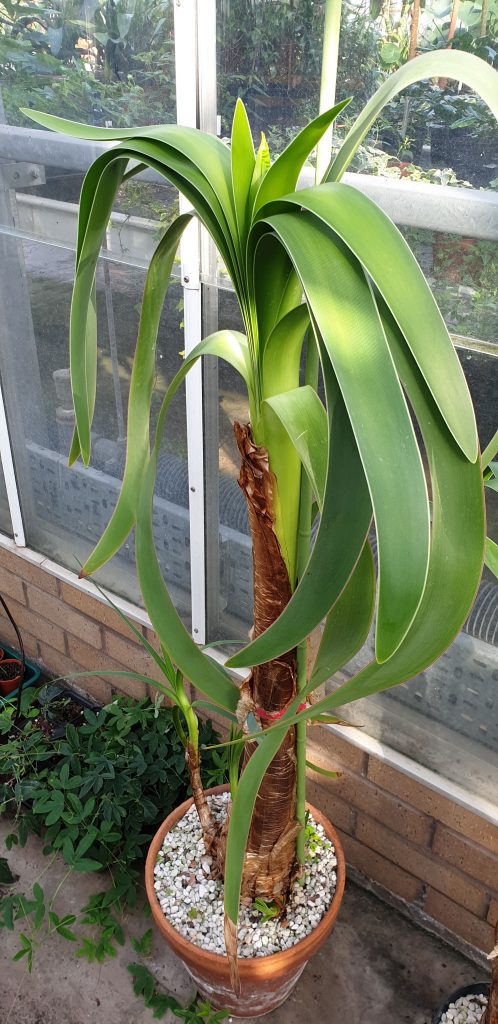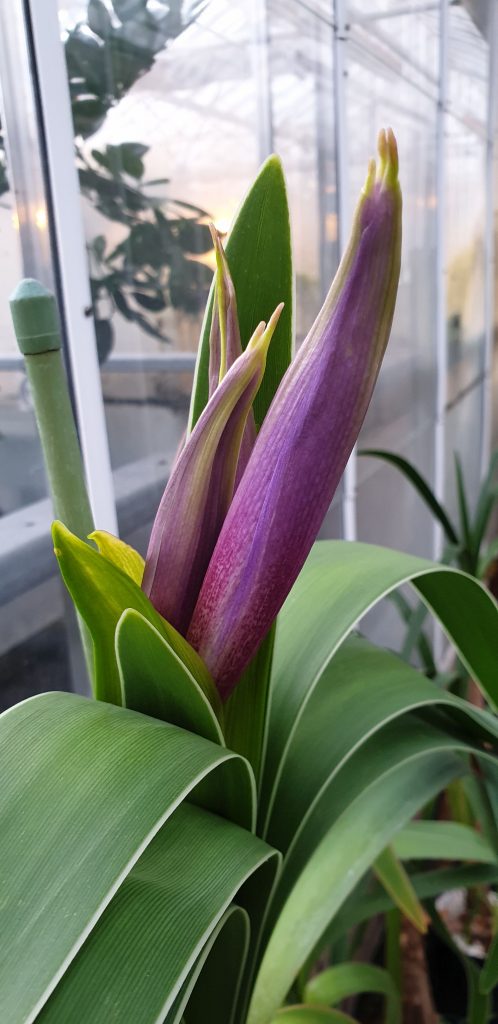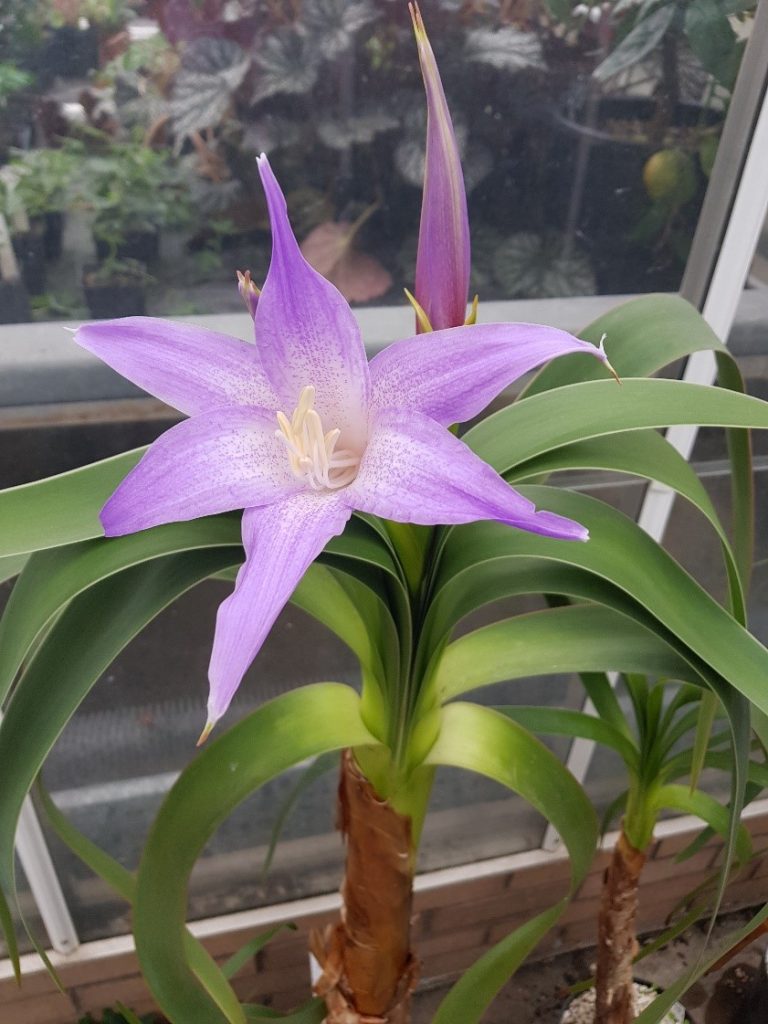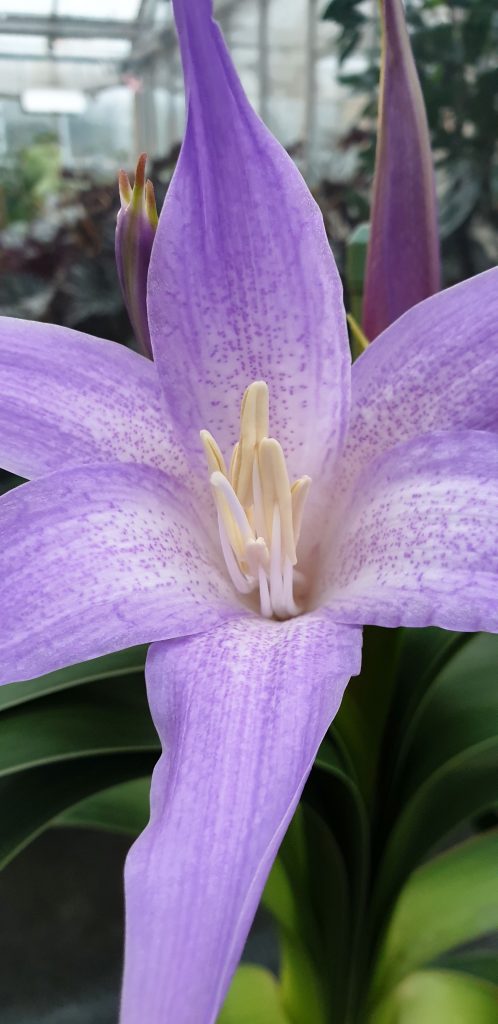Worsleya is a Brazilian plant in the Amaryllidaceae family, cultivated as an ornamental because of its showy flowers. There is only one known species, Worsleya procera syn. Worsleya rayneri. Both names are still in use, although the current accepted name is W. procera.
The genus is named after Arthington Worsley (1861-1943), a British plantsman and engineer, who observed it in the wild and was the first to flower it in cultivation.

This species is also known as the Empress of Brazil because of its origin in South America. It grows on steep granite cliffs/well drained area, fully exposed to wind, rain and sunshine, constantly subjected to mist from waterfalls. However, it can be difficult to cultivate. It has particular of needs, though it can exhibit great hardiness it can take – 1-2°C when mature. Worsleya comes from an area of moderate temperatures. The annual average is around 19 °C. In warmer months, the average temperature is 23 °C and the average of the coldest month is 15 °C the lowest temperature recorded was −0.7 °C.

The plant has a large bulb that produces a 30 to 60cm tall high stem and occasionally to 150cm with green recurved leaves. Worsleya produces spectacular and beautiful blooms. They are large, lilac to blue, with small freckles on them.
Growing medium — Worsleya needs a loose, airy medium that drains very rapidly and provides plenty of moisture to the roots, to mimic its specific habitat in the wild. For this reason, ordinary compost media does not work. Here at RBGE we use a good base medium is porous rock such as lava rock, pumice or other volcanic rock, approximately 5 to 10 mm in size. We sieve out any tiny particles or very big pieces.
Some organic material may be mixed in to retain extra moisture & nutrients, like fine-grade bark. We used Melcourt Propagation bark particles 2 to 7mm in size. Seedlings and adult bulbs do not go through a dormancy period and will continuously grow throughout the year.
We received this plant from Oxford University Botanic Gardens in September 1993 as Hippeastrum procerum from a cultivated plant not of known wild origin.
I have grown this plant in a tropical glasshouse for 19 years with no success of flowering. Having read they need a temperature fluctuations for warm day’s cool nights, last year I moved it to an unheated poly tunnel from May until December and then placed in a glasshouse corridor for the winter, with temperatures of 14oC to 18oC. On February 20th I noticed a flower bud just coming through the growing point and the flower spike has slowly continued to grow over the last 2 weeks.

On the 7th March the flower opened for the first time at the RBGE…… well worth the wait!
Neil Watherston


Ivorra patrick
Bonjour, où peut on acheter un pied de Worsleya procera s il vous plaît. Merci
J habite en France, et possède une serre chauffée.